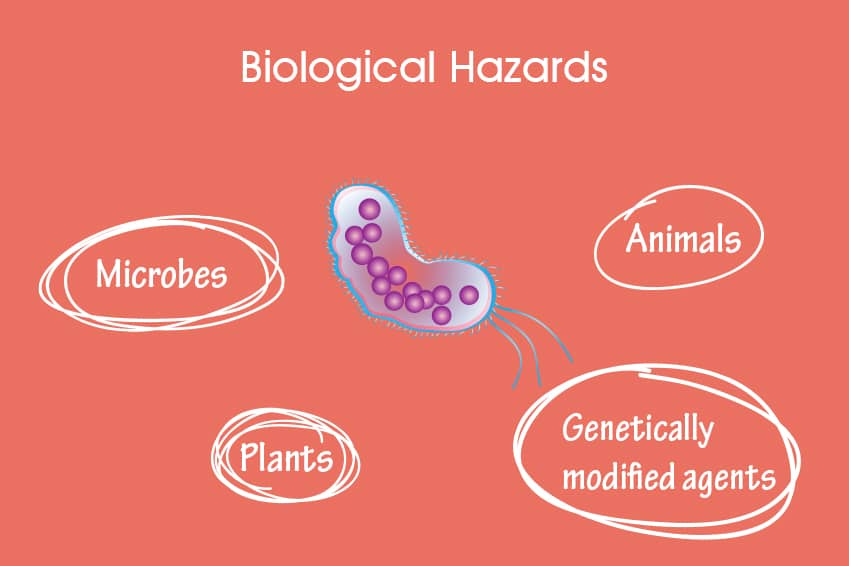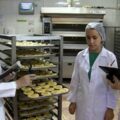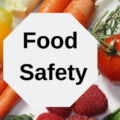Food Safety and Environmental Hazard Quiz
Food safety refers to routines in the preparation, handling and storage of food meant to prevent foodborne illness and injury. From farm to factory to fork, food products may encounter any number of health hazards during their journey through the supply chain. Safe food handling practices and procedures are thus implemented at every stage of the food production life cycle in order to curb these risks and prevent harm to consumers.
As a scientific discipline, food safety draws from a wide range of academic fields, including chemistry, microbiology and engineering. These diverse schools of thought converge to ensure that food processing safety is carried out wherever food products are sourced, manufactured, prepared, stored, or sold. In this sense, food safety is a systemic approach to hygiene and accountability that concerns every aspect of the global food industry.
How do you control significant food safety hazards?
Control measures in your food business
Step 1: Get a copy of your hazard analysis and HACCP plan.
Step 2: Review the hazard / control measure combination to see if they are aligned.
Step 3: Rectify any inconsistencies and update your documents.
Step 4: Implement any adjusted control measures into your food business.
What are the major food hazards?
Such hazards are categorized into three classes: biological, chemical and physical. Biological hazards include harmful bacteria, viruses or parasites (e.g., salmonella, hepatitis A and trichinella). Chemical hazards include compounds that can cause illness or injury due to immediate or long-term exposure.
How can you identify food hazards?
Identifying Food Safety Hazards
(1) Review your customer complaints. Have a look at what your customers are complaining about.
(2) Look at business history. Talk to people who have worked in the business for a long period of time.
(3) Talk to staff.
(4) Access Government Public Databases.
(5) Research industry based journals and technical information.
How do you prevent biological hazards?
Wash hands before and after work. Also wash hands immediately before and after wearing protective clothing, uniforms or gloves to reduce the possibility of infection. Biological hazards can kill. Or they may cause discomfort and affect the health and performance of employees at the very least.
What are biological food hazards?
A general definition of a hazard as related to food safety is conditions or contaminants that can cause illness or injury. Biological hazards include microorganisms such as bacteria, viruses, yeasts, molds and parasites. Some of these are pathogens or may produce toxins.
What are food hazards?
A food safety hazard is anything present in food with the potential to harm the consumer, either by causing illness or injury. Food safety hazards can be biological, chemical, or a physical object.
What are the four types of biological hazards?
Some examples of biological hazards are:
- Mold and Fungi.
- Blood and Body Fluids.
- Sewage.
- Airborne pathogens such as the common cold.
- Stinging insects.
- Harmful plants.
- Animal and Bird Droppings.
Which food safety practice will help prevent biological hazards?
Storing chemicals away from food, Removing pits and bones from food and washing hands before preparing food is a safety practice that will help prevent biological hazards.
What is the 2 hour 4 hour rule?
The 2 Hour/ 4 Hour Rule tells you how long freshly potentially hazardous foods, foods like cooked meat and foods containing meat, dairy products, prepared fruits and vegetables, cooked rice and pasta, and cooked or processed foods containing eggs, can be safely held at temperatures in the danger zone; that is between
What are the types of hazard?
The six main categories of hazards are:
- Biological. Biological hazards include viruses, bacteria, insects, animals, etc., that can cause adverse health impacts.
- Chemical. Chemical hazards are hazardous substances that can cause harm.
- Physical.
- Safety.
- Ergonomic.
- Psychosocial.
What is the meaning of geological hazards?
A geologic hazard is an extreme natural events in the crust of the earth that pose a threat to life and property, for example, earthquakes, volcanic eruptions, tsunamis (tidal waves) and landslides.
What are the four 4 main ways hazards are typically controlled?
The hazard controls in the hierarchy are, in order of decreasing effectiveness:
- Elimination.
- Substitution.
- Engineering controls.
- Administrative controls.
- Personal protective equipment
What are the 5 types of hazards?
Types of workplace hazards include chemical, ergonomic, physical, psychosocial and general workplace.
Luckily, there are ways to mitigate the risks from these hazards such as through planning, training and monitoring.
What are the hazards of poor food preparation?
As mentioned, many of the poor food handling practices that allow for bacterial growth and cross contamination will also be the same practices that lead to food poisoning. There are many variants of food poisoning, from nausea and vomiting to far more severe outcomes such as seizures, brain damage or even death.
What are some examples of physical hazards?
A physical hazard is defined as “A factor within the environment that can harm the body without necessarily touching it. Vibration and noise are examples of physical hazards”. Physical hazards include but aren’t limited to electricity, radiation, pressure, noise, heights and vibration amongst many others.
What are the 4 types of contamination?
The four Types of Food Contamination are:
- Biological
- Chemical
- Physical
- Cross
What are contamination hazards of food?
Food safety hazards occur when food is exposed to hazardous agents which result in contamination of that food. Food hazards may be biological, chemical, physical, allergenic, nutritional and/or biotechnology-related.
How do you manage hazards?
In order to control workplace hazards and eliminate or reduce the risk, you should take the following steps:
- identify the hazard by carrying out a workplace risk assessment;
- determine how employees might be at risk;
- evaluate the risks;
- record and review hazards at least annually, or earlier if something changes.
ALSO READ: Why Is Food Safety and Sanitation Important?





